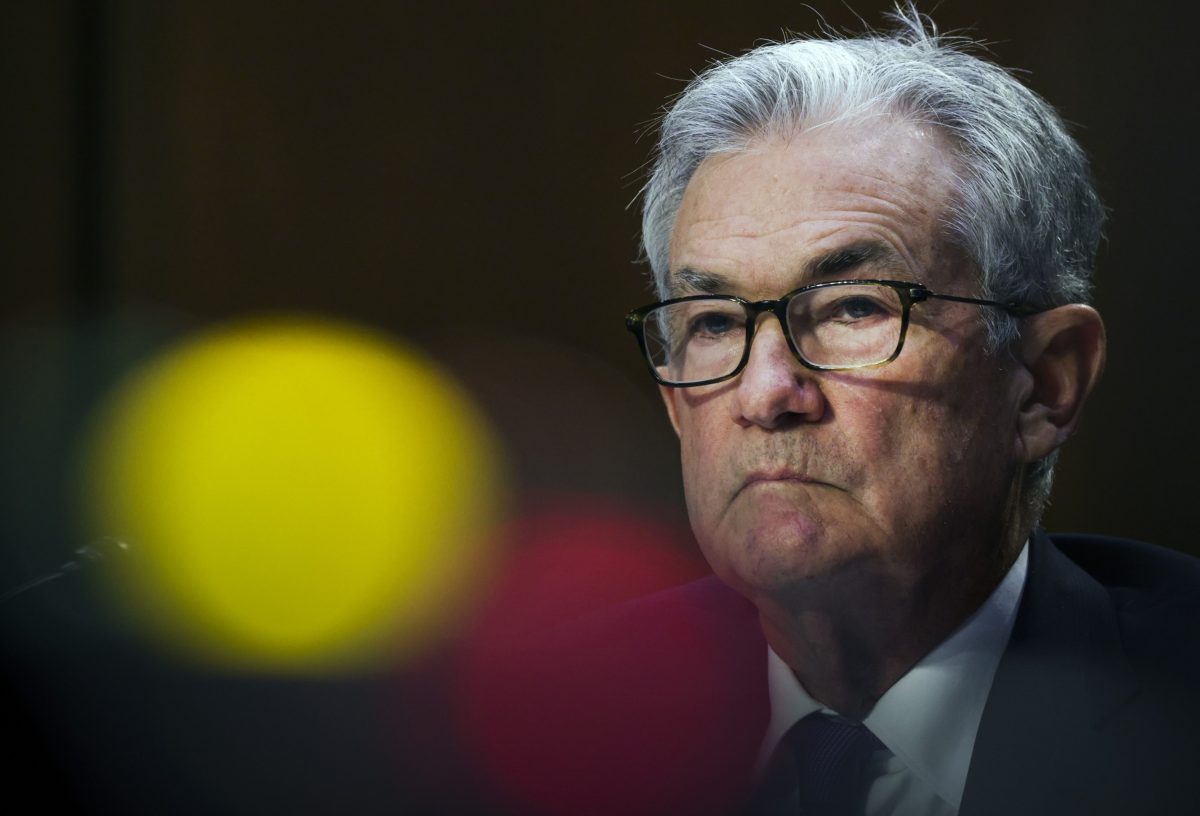Inside the Fed, it's steady-as-she-goes. Investors see this week's meeting as an easy call, with officials set to vote for leaving their policy rate unchanged for now.
Outside, the conversation is quite different. Former policymakers and veteran Fed watchers are increasingly preoccupied with what the central bank will be able to do, and the tools it will need, when the next downturn arrives.
The debate keeps throwing up bold new ideas—from direct cash injections to a digital dollar to explicit coordination between central bankers and the politicians who control budgets, an idea floated by JPMorgan Chase & Co. chief Jamie Dimon in Davos last week. And the Fed is, in fact, halfway through a review of tools and communications, a discussion that may feature prominently at the meeting tomorrow and Wednesday.
But that exercise isn't likely to deliver the kind of radical innovation that Dimon and others have sketched. Fed Chairman Jerome Powell and his colleagues are indicating that any changes will be marginal. The 2 percent inflation target is sacrosanct, talk about fiscal-monetary cooperation is off-limits, and Fed policymakers are unimpressed by Europe's experiment with negative interest rates.
"At this point, the Fed is practically out of ammunition to fight the next recession," said Andrew Levin, a Dartmouth College professor and former senior adviser to Janet Yellen. "Fed officials should engage in frank discussions with Congress about how to strengthen the Fed's monetary policy toolbox."

Former New York Fed open market account manager Simon Potter and economist Julia Coronado are working on a proposal where the Fed would engage in direct transfers of cash into consumer accounts to stimulate spending in a recession. Economists such as Coronado and Potter are looking at unconventional strategies because of the level of current interest rates. More than a decade into the expansion, Treasury yields remain ultra-low.
The Fed's target range for its benchmark policy rate is currently at 1.5 percent to 1.75 percent, and policymakers are expected to keep it unchanged Wednesday.
Remarkably, the 10-year Treasury yield—at 1.68 percent in late Friday trading—is below the top range of the fed funds rate. Five-year Treasuries yield about 1.5 percent.
That means quantitative easing—a bond-buying program that policymakers deployed in the last financial crisis—would have little room to push nominal Treasury yields lower after cutting their policy rate to zero.
That's in part why calls for thinking outside the box are growing. Former Fed Vice Chairman Stanley Fischer and former Swiss National Bank Chairman Philipp Hildebrand have proposed with co-authors that the central bank and fiscal authorities team up to hit the inflation goal.
Other proposals in recent years that are still resonating include one by Rutgers University economist Michael Bordo and Dartmouth's Levin in 2017 that the central bank issue digital currency to accounts held by people and businesses at regulated banks. The accounts would pay the rate the Fed pays on its overnight bank lending rate. The Fed could reduce the rate to negative to stimulate spending in a downturn as investors and households use cash that would be at risk of losing value.
President Donald Trump has also called for negative interest rates and said the U.S. is missing an opportunity. But Fed officials worry that such a policy could introduce distortions and risk into the financial system, minutes from the October meeting show.
Another idea by former Fed Chairman Ben S. Bernanke in 2016 would develop a "money-financed fiscal program," where the central bank prints money for Congress to spend on public works and tax rebates.
JPMorgan's Dimon said in a Jan. 22 CNBC interview that monetary and fiscal policy have previously been coordinated to accomplish economic goals. "They did it together in the Great Depression, and they did it to get out of World War II," he said.
Powell has insisted the Fed stay in its lane and avoid fiscal policy discussions—the purview of the federal government. But by trying to maintain independence, the Fed also may lose it. If the Fed's tools were less effective in a period of high unemployment, Congress could revisit what it wants the Fed to do.
The risk is that the central bank might adopt modest framework changes that create doubt about their recession-fighting tools. That skepticism could put more downward pressure on Treasury yields and further cement low inflation expectations among the public, further reducing the room the Fed has to cut rates.
For now, Fed officials are mostly counting on buying more bonds, verbal pledges to keep their interest rate low, and modest tweaks to their inflation goal, such as setting policy so that prices overshoot their target for a while to make up for past misses. There is also a discussion about targeting short-term Treasury yields.
See also:
Assessing the Impact of the Fed's Interest Rate End Game
That's the kind of conversation they should be having, said Lewis Alexander, chief U.S. economist at Nomura Securities International Inc.
"The Fed has been given independent authority over a narrow set of policy tools with a well-defined objective," he said. "Respect for the democratic process that created the Fed dictates that the Fed should respect those limits."
Trump's attacks on the Fed may also be constraining the discussion. "They live in a scary neighborhood," said Vincent Reinhart, chief economist at Standish Mellon Asset Management.
Non-standard policies are "a really tough discussion for an FOMC member without being perceived as someone who wants to change things dramatically and risk how the Congress and the Fed are separated," said Torsten Slok, chief economist at Deutsche Bank AG. However, "we are moving in a direction where, as unpleasant as these discussions are, it is inevitable that we have them."
© 2025 ALM Global, LLC, All Rights Reserved. Request academic re-use from www.copyright.com. All other uses, submit a request to [email protected]. For more information visit Asset & Logo Licensing.




